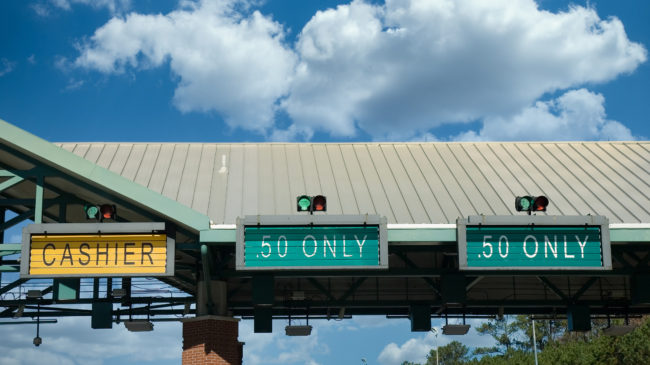Last month, Reason Foundation released my policy study suggesting that hard-pressed state governments consider leasing their existing toll roads to experienced toll road companies, using the lease payments to fund needed infrastructure projects and shore up their ailing balance sheets. I was not too surprised that a number of toll agency leaders were concerned by what they perceived as the threat of a hostile takeover (despite the study pointing out benefits for existing staff and management in working for a larger, more-businesslike enterprise). But what did surprise me were comments from a number of friends and allies, alleging that this proposal undercut Reason’s long-time advocacy of the users-pay/users-benefit principle.
I think some of this stemmed from the study’s estimating the market value of the toll roads and noting—not recommending—that in most such lease deals the entire lease payment is made up-front, with the highest-value toll road in the study having a net estimated value of $19.4 billion. The reaction was that the value created by decades of toll payments would now be siphoned off to benefit others.
In fact, those many millions of dollars in customers’ annual toll payments have paid for the capital and operating costs of the toll road as it exists today. Its asset value is there but represents frozen capital. And in a disturbing number of cases, large government-owned toll systems have been required by legislatures to divert large fractions of their toll revenue each year to non-toll road uses. One of the objectives of a long-term lease to a commercial company is to de-politicize the toll road, protecting it via a legally enforceable long-term lease agreement from legislative raids on its revenues.
Most U.S. toll roads are, in fact, what economists call state-owned enterprises (SOEs). They are set up to carry out a business purpose, but are constrained by various politically-determined obligations and therefore are not really the same as marketplace businesses. They also don’t have owners in the form of investors/shareholders who can hold management accountable for efficiently delivering services to their customers and generating a return to their investors (currently the bondholders who provide most of the long-term financing). The World Bank some years ago released a book (Bureaucrats in Business, 1995) that explained how the lack of owners and nearly inevitable politicization make it difficult to run a state-owned enterprise efficiently.
When Margaret Thatcher became the United Kingdom’s prime minister in 1979, she set about divesting a vast array of (state-owned enterprises from the British government. To be sure, most had customers who paid for the services received (airports, airlines, electricity, natural gas, water supply, etc.), but I never heard conservatives or libertarians arguing that selling these enterprises for their market value was somehow betraying their customers. Would it have been better for the British government to give the SOEs away?
My Reason toll roads study argues that “monetizing” the asset value of a state-owned toll road would be wise only if certain criteria were respected. First, the competitive bidding for the long-term lease would be open only to highly qualified toll road companies with positive track records. A dozen such firms were briefly profiled in the study.
Second, the long-term lease’s terms and conditions would include numerous key outcome measures (such as pavement quality, responses to emergencies, and many more), as well as provisions for early termination if things go wrong.
Third, the company would agree to limits on toll increases, to prevent sudden spikes in toll rates (like the 36 percent increase that just went into effect on the state-owned New Jersey Turnpike). Most long-term lease agreements for toll roads limit annual increases to an inflation index.
The companies that rate the long-term revenue bonds of toll roads are increasingly critical of legislative measures that divert significant fractions of toll revenues to other governmental purposes—such as Pennsylvania and New Jersey diverting large sums each year for local transit subsidies, and New York diverting revenue to support (among other things) the Erie Canal. Another goal of the proposed change in toll road governance is to prevent the “cash cow-ification of toll roads” by legislatures.
The idea of long-term leasing of state-owned toll roads is not just theory. It exists widely in Europe, where state-owned toll roads in France, Italy, Portugal, and Spain were all divested to investor-owned companies under long-term lease agreements about 20 years ago. The same is true in most of the larger countries in Latin America, and for urban toll roads in Australia’s three largest cities.
In the United States, five long-term toll road leases came about last decade, including the Chicago Skyway, the Indiana Toll Road, and the San Juan, Puerto Rico, toll roads. Those roads are well-managed today, and both the Indiana road and the Skyway have investment-grade bond ratings.
In short, toll road customers stand to gain from a long-term lease to a world-class toll road company, especially if their current toll agency is being forced to divert toll revenue to other purposes. Under the toll road leases that exist worldwide today, customers are protected from outsize rate increases, and their toll payments are used, properly, for the capital and operating costs of the toll road. Why would this not be an improvement?

